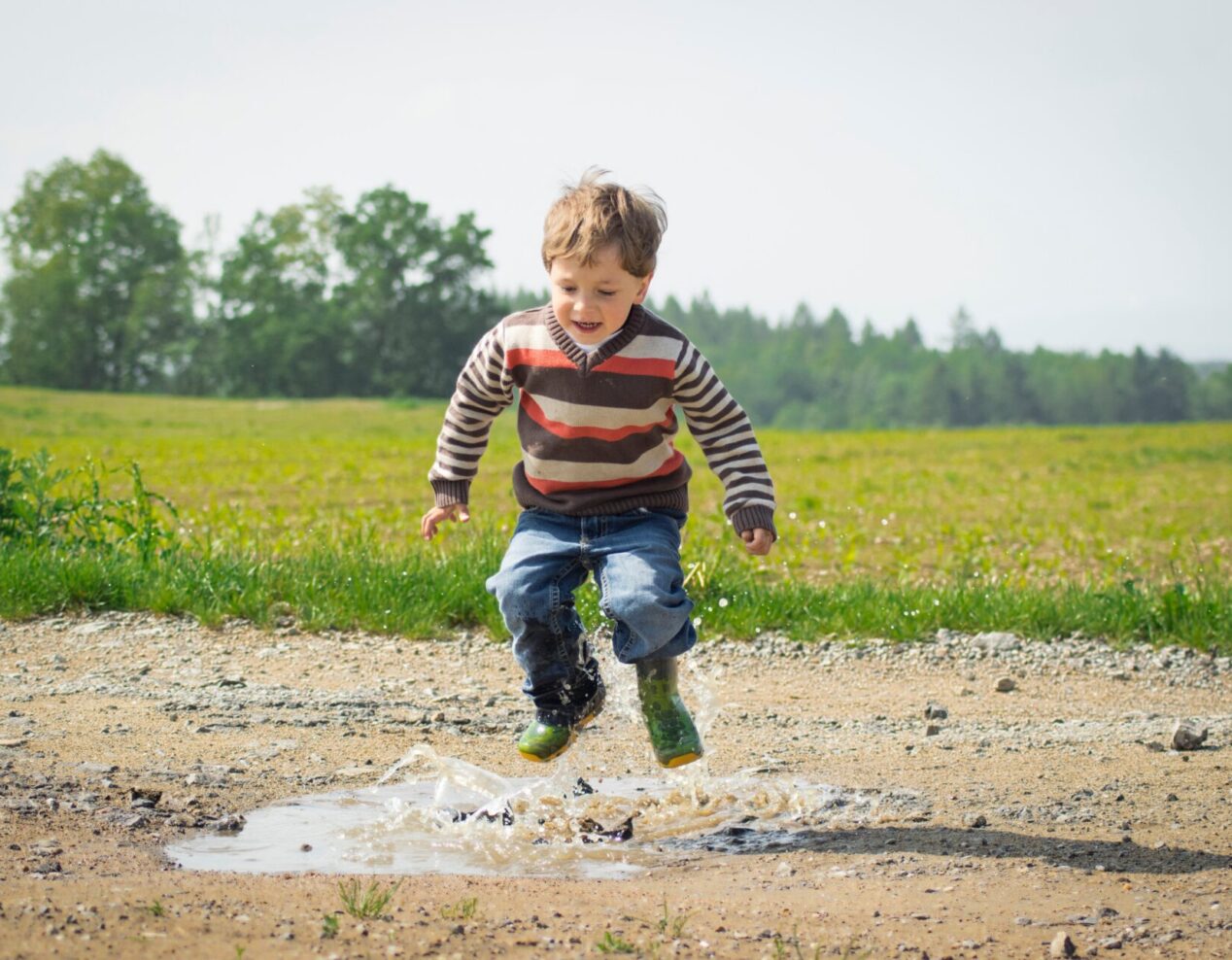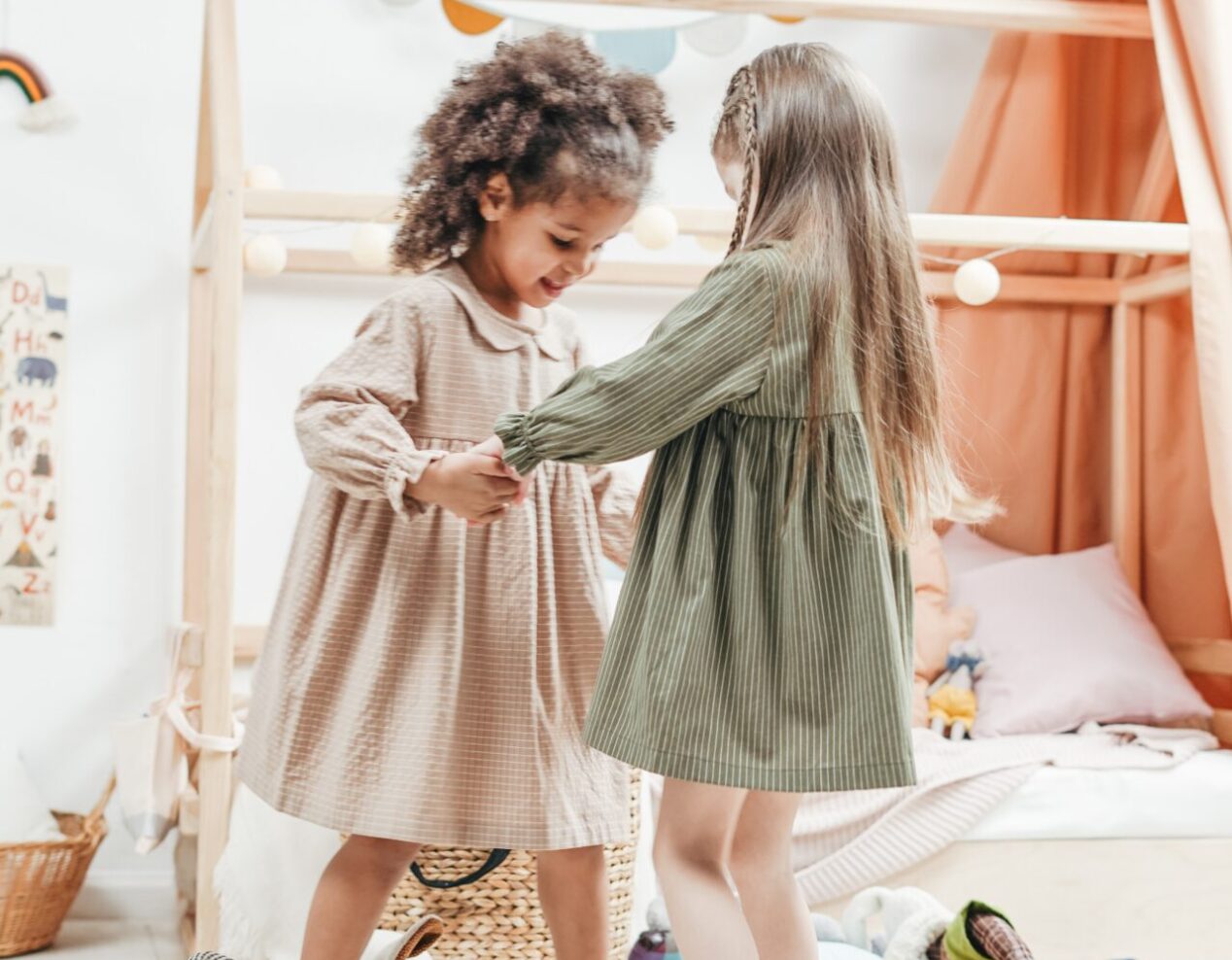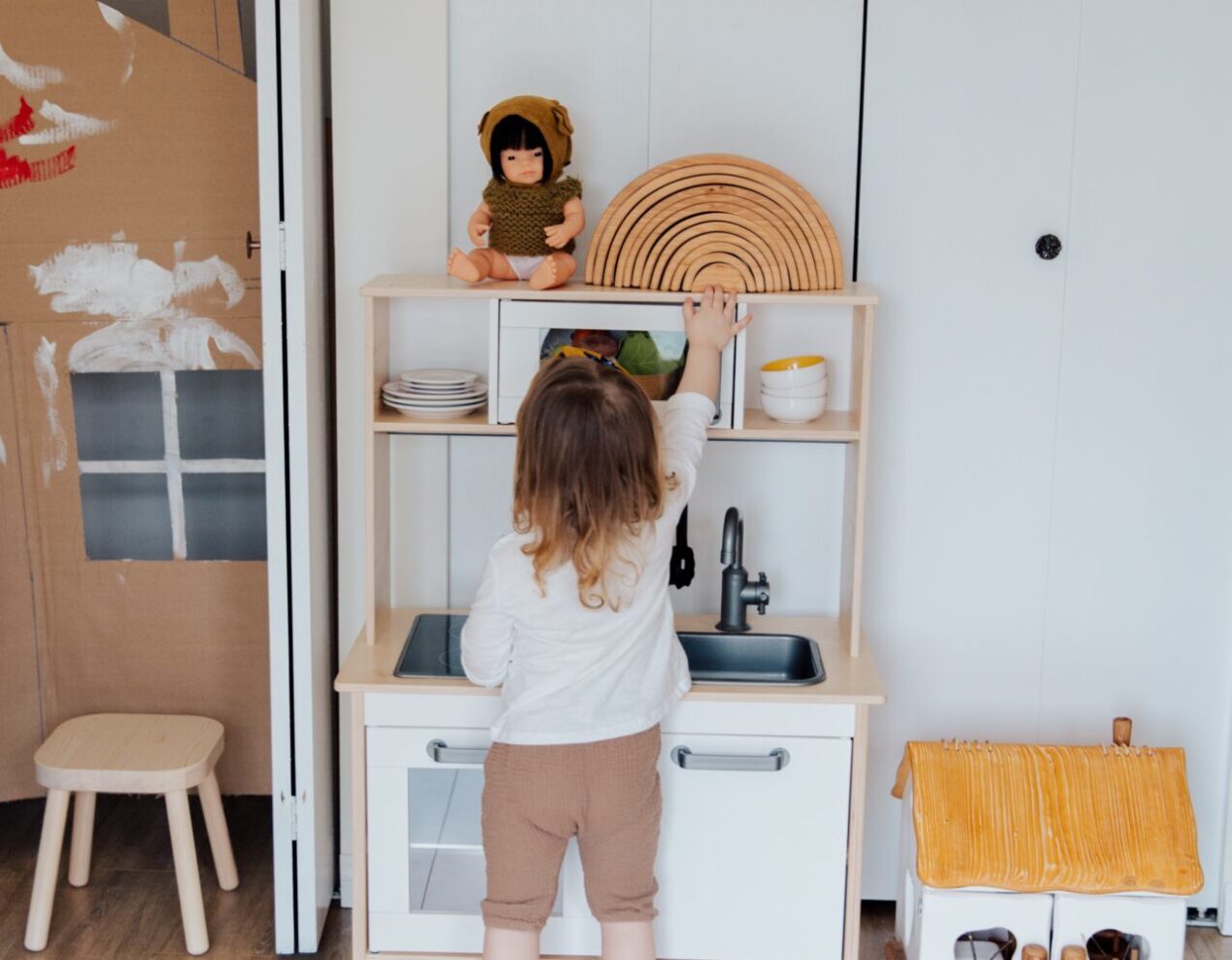Encouraging self-guided play with a minimalist touch

Toddler engaged in solo play
While it’s true that a two-year-old’s solo play capacity has its boundaries, it’s also important to acknowledge that every child is unique. Generally, children of this age require a certain level of adult oversight, advice, and assistance, especially beyond the first few moments. As per a 2008 publication in the Infant & Child Development Journal, the attention span of a two-year-old ranges around 5-8 minutes.
The brighter side: There are techniques to foster independent play in toddlers, which can significantly aid their development.
Here’s how to promote self-guided play among two-year-olds: Incorporate daily “focused periods” By instilling this habit early, it can serve similarly to “quiet time” as kids start needing fewer naps. During these focused periods, everyone engages in their individual activities—adults might be working (professional tasks, reading, house chores), and children might be playing. This duration might initially last only for a few minutes but increasing its importance could gradually extend these periods.
Maintain realistic goals during focused time: For instance, while preparing a meal, a related task can be assigned to the child, like dropping cut fruits into a bowl or stirring ingredients.
Design a “green light zone”
These are areas where children have an appropriate selection of playthings, designed as per their interest level and ability, and nothing poses a risk or is off-limits. Often, children are confronted with “no”, and providing a green light zone where they can explore without boundaries can enhance their attention span and encourage self-guided play.
Limit options and alternate toys to retain interest
The Montessori play philosophy posits that fewer physical objects yield more. Offering limited options allows children to delve deeper into play, extend playtime, and forge stronger bonds with their playthings.
Establish activity corners
Educators in daycare and preschool frequently set up straightforward activity corners that kids can freely move among. Simplicity is key here—try setting up a small pile of bricks in one basket, a modest collection of natural items in another (feathers, acorns, pebbles), and a balance scale with objects to weigh in another.
Initiate play
Interestingly, a well-considered invitation to play can bolster a child’s independence. Becca from Il Bambino elaborates:
“Arrange an activity they can undertake alone (sensory bin, reading books, doll play, etc.). Initiate the play with them. Ensure to stay present (avoid distractions like a phone or mental to-do lists). Once they seem engrossed in the play, shift to a passive role—minimize dialogue (naming shapes, colors, counting, etc.) and let them focus.”
Even though presence may still be required, an attempt can be made to allow them to play on their own for a while.
Play less dominantly
It’s natural to assume a leading role when engaging with young kids. However, by assuming a supportive role—instead of a directive one—children are given the space to discover more about themselves and their capabilities.
Janet Lansbury, a RIE parenting method advocate, asserts, “learning to be a play ‘supporter’ rather than playmate requires practice, involves sensitive observation, open-mindedness, acceptance, and above all, restraint. But once this is mastered, it can be an incredibly calming, fulfilling, Zen-like experience.”
This unobtrusive approach to play encourages independence and self-assurance in children. It also paves the way for longer periods of solo play. If a child asks for help, propose a solution for them to try; when they ask to retrieve something, guide them to its location, enabling self-reliance.
Embrace improv and make-believe play
In the realm of improv comedy, the guiding principle is “yes and”—meaning accepting the proposed reality and building upon it. As two-year-olds start pretend play, invitations to join in for tea, tuck their dolls in, or ride a pretend train may arise. Meeting them in their imaginary world validates their creativity and encourages them to immerse themselves in pretend play. Reinforcing that their make-believe play is significant and enjoyable will increasingly lead to them initiating pretend play on their own.



